“One charming night gives more delight than a hundred lucky days”. So claims one of the gorgeous (and, in this case, risqué) numbers that stud Purcell’s “semi-opera” The Fairy Queen like sequins on a flamboyant party gown.
Directed by tenor-turned-conductor Paul Agnew (pictured below), the Baroque ensemble Les Arts Florissants – together with singers from its sister company Le Jardin des Voix and dancers from Compagnie Käfig – certainly threw one hell of a Proms party. The illustrious French group’s all-dancing, all-singing, hip-hop-flavoured remake of Purcell’s loose riff on A Midsummer Night’s Dream came to Kensington to cap a triumphal progress that has seen a standing ovation at La Scala and acclaim at Versailles and the Lincoln Center. It sent a packed Albert Hall into similar transports of ecstatic enthusiasm.
The dancing was simply stunning; the singing consistently fine; the orchestral playing fresh, bold and flavourful – and the integration of all performers into a single company in which vocalists danced, and dancers acted, outstanding. Why, then, did I feel that this fabulous spectacle had a hole in its heart? 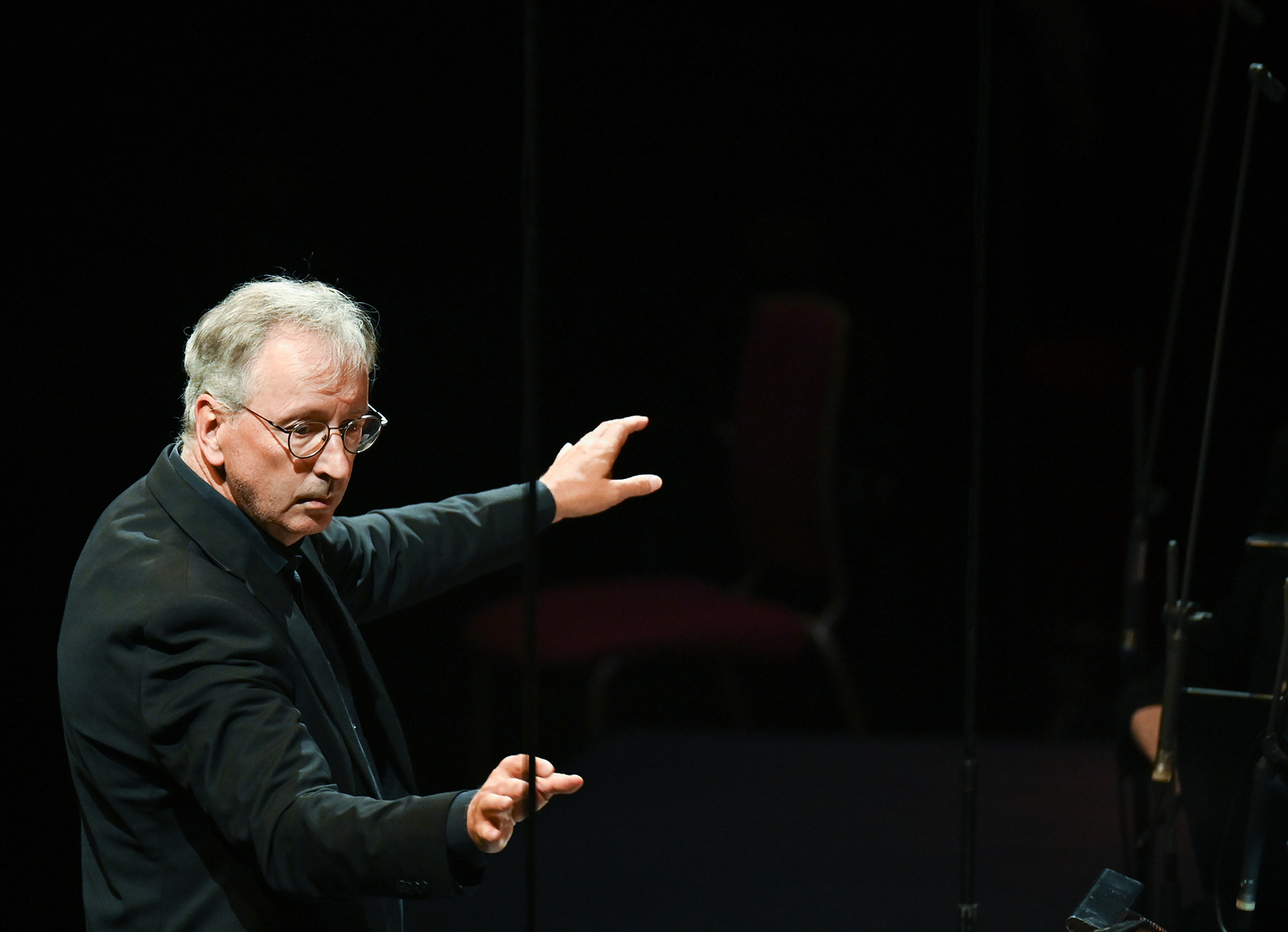 For sure, there’s little “authentic” drama here to betray. The Fairy Queen – which celebrated William and Mary’s wedding anniversary in 1692 – took a drastically transformed version of Shakespeare’s comedy as the pretext for a series of masques with a slender link to the play’s action. However, Les Arts Florissants’ founder-director William Christie, who conducted earlier performances of this production, has previously, in a staging for Glyndebourne, sought to anchor The Fairy Queen in a recognisable narrative. Here, all that went out of the window.
For sure, there’s little “authentic” drama here to betray. The Fairy Queen – which celebrated William and Mary’s wedding anniversary in 1692 – took a drastically transformed version of Shakespeare’s comedy as the pretext for a series of masques with a slender link to the play’s action. However, Les Arts Florissants’ founder-director William Christie, who conducted earlier performances of this production, has previously, in a staging for Glyndebourne, sought to anchor The Fairy Queen in a recognisable narrative. Here, all that went out of the window.
With zero help from a programme that included no libretto (though we had surtitles), failed to ascribe singers to roles, or to give a clear synopsis, we were left with a dazzling succession of self-standing turns loosely connected by mood and tone. For all the glamour and swagger, it felt as if a breathtakingly virtuosic Baroque counterpart of Le Cirque du Soleil had returned to this venue. The artistry, from moment to moment, was quite extraordinary. The sense of artistic design – or coherent dramatic purpose – was elusive. As cabaret, it roared. As human-scale theatre, it whispered. 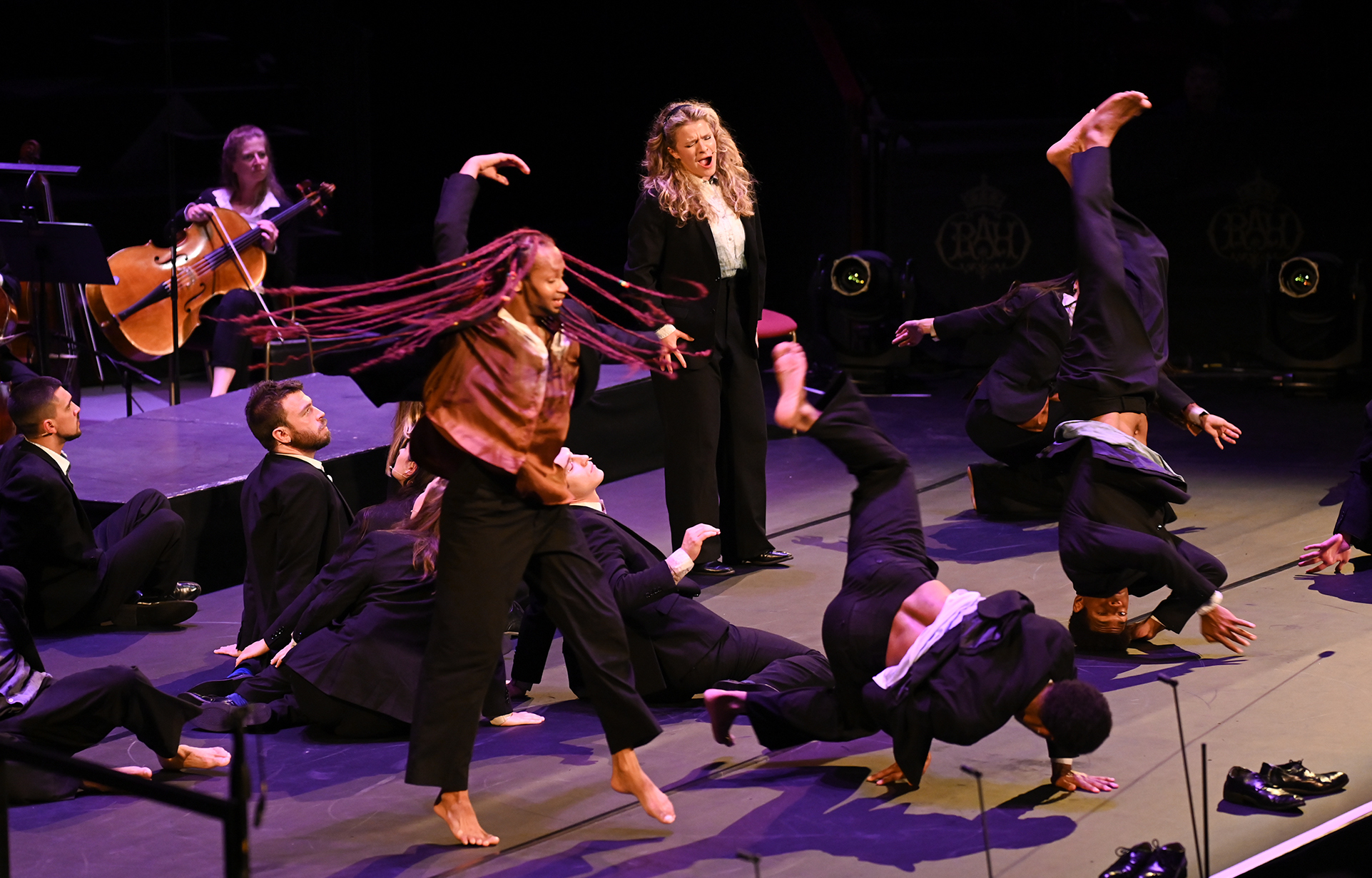 Yes, words can hardly do justice to the gymnastic brilliance of the dancers from Mourad Merzouki’s Compagnie Käfig (pictured above with Georgia Burashko). They not merely brought street-smart breakdance into ballet but combined gravity-defying somersaults and gyrations with more formal routines that channelled both the stateliness and rusticity of 1690s steps. Merzouki’s flexible choreography allowed for expression of character as well as spectacle: at points these supremely graceful acrobats even indulged in some comically clumsy dad-dancing of the kind to be seen at weddings any weekend. If Samuel Florimond flew especially high, his colleagues Baptiste Coppin, Anahi Passi, Alary-Youra Ravin, Daniel Saad and Timothée Zig also lifted the spirits with every move. And their street style sometimes made for a surprisingly neat fit with Purcell’s enlistment not just of courtly but rustic forms. A hip-hop hornpipe? It really worked.
Yes, words can hardly do justice to the gymnastic brilliance of the dancers from Mourad Merzouki’s Compagnie Käfig (pictured above with Georgia Burashko). They not merely brought street-smart breakdance into ballet but combined gravity-defying somersaults and gyrations with more formal routines that channelled both the stateliness and rusticity of 1690s steps. Merzouki’s flexible choreography allowed for expression of character as well as spectacle: at points these supremely graceful acrobats even indulged in some comically clumsy dad-dancing of the kind to be seen at weddings any weekend. If Samuel Florimond flew especially high, his colleagues Baptiste Coppin, Anahi Passi, Alary-Youra Ravin, Daniel Saad and Timothée Zig also lifted the spirits with every move. And their street style sometimes made for a surprisingly neat fit with Purcell’s enlistment not just of courtly but rustic forms. A hip-hop hornpipe? It really worked.
Yes, the singers not only delivered their arias with polish and panache but interacted energetically, and effectively, both with dancers and instrumentalists. From time to time, these emerged from their place behind the main stage to accompany the vocalists in duets or small-group numbers. With Les Arts Florissants' leader Augusta McKay Lodge as her partner, mezzo Juliette Mey gave as ravishing an account of Purcell’s famous “Plaint” – “O Let me Weep” – as you will hear.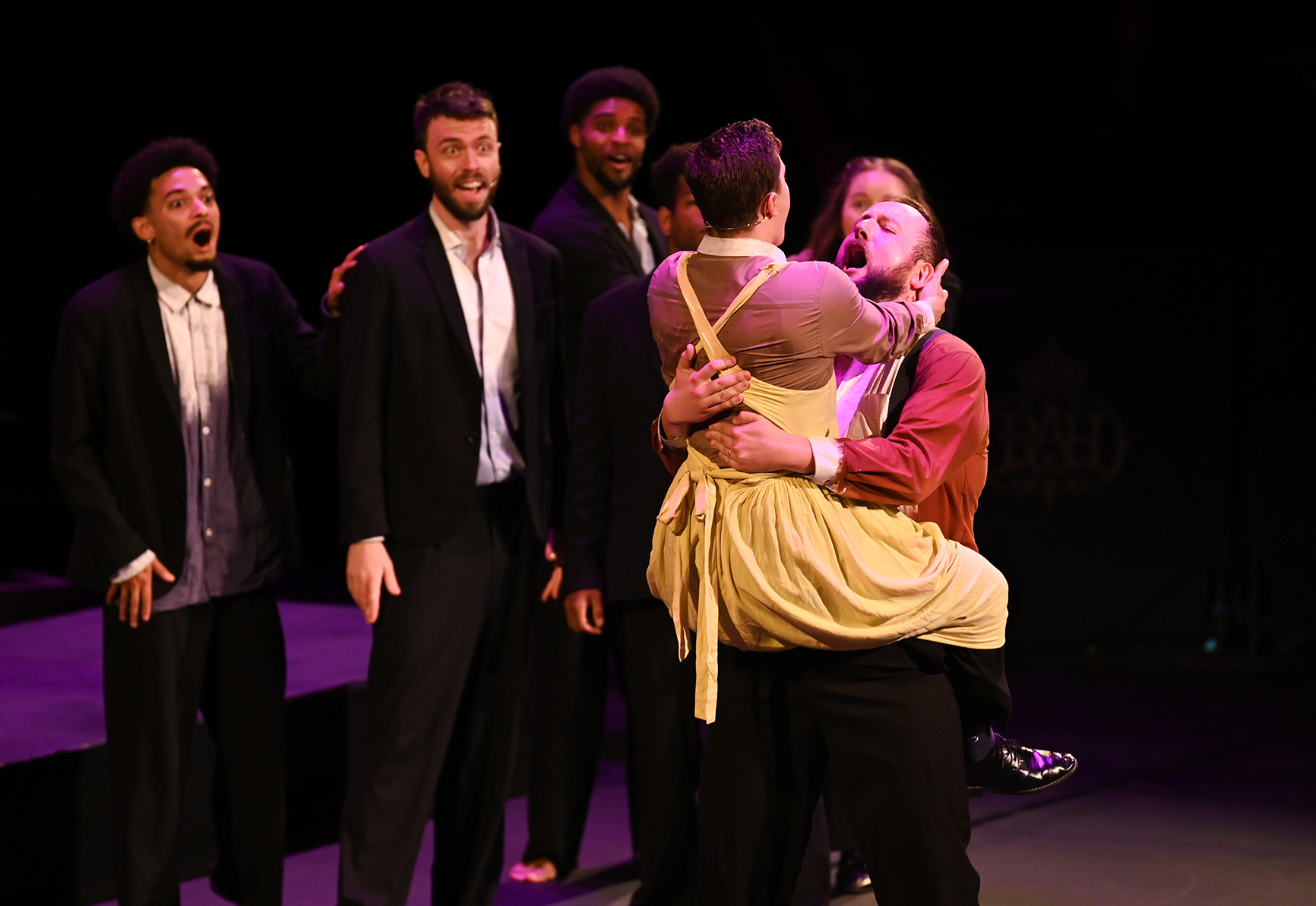 Other highlights included her fellow mezzo Georgia Burashko’s ethereal “Gentle Spirits of the Air”, Ilja Aksionov’s silkily sensuous “One Charming Night”, Rebecca Leggett’s exuberant “Thrice Happy Lovers”, and the beautifully executed pantomime routine in which Hugo Herman-Wilson, as the amorous swain Corydon, tries to seduce Aksionov’s dragged-up damsel Mopsa only to be told: “No kisses at all”. That resistance doesn’t last long – and the cross-dressing element, by the way, was specified back in 1692. Benjamin Schilperoort’s bass-baritone, creamily resonant, shaped arias such as “Hush no more” with impressive power and presence.
Other highlights included her fellow mezzo Georgia Burashko’s ethereal “Gentle Spirits of the Air”, Ilja Aksionov’s silkily sensuous “One Charming Night”, Rebecca Leggett’s exuberant “Thrice Happy Lovers”, and the beautifully executed pantomime routine in which Hugo Herman-Wilson, as the amorous swain Corydon, tries to seduce Aksionov’s dragged-up damsel Mopsa only to be told: “No kisses at all”. That resistance doesn’t last long – and the cross-dressing element, by the way, was specified back in 1692. Benjamin Schilperoort’s bass-baritone, creamily resonant, shaped arias such as “Hush no more” with impressive power and presence.
Meanwhile, Agnew’s direction of Les Arts Florissants almost overcame the handicap of their position behind the movement-filled stage in a vast space whose acoustic seldom treats Baroque delicacy with much respect. The natural trumpets did sound, and splendidly so, thanks to Rupprecht Drees and David Blackadder. I loved what I could hear of Nicholas Milne’s viola da gamba, and Sergio Bucheli on guitar and lute spun a hauntingly elegant web of melody. When players emerged to interact with the company, their talents (literally) came out of the shadows – with some delicious passages from the recorder pair, Sébastien Marq and Nathalie Petibon (pictured below). Ensemble scenes, such as the “symphony” that hails the return of the sun (“Great parent of us all”), had a satisfying grandeur, lustre and radiance. 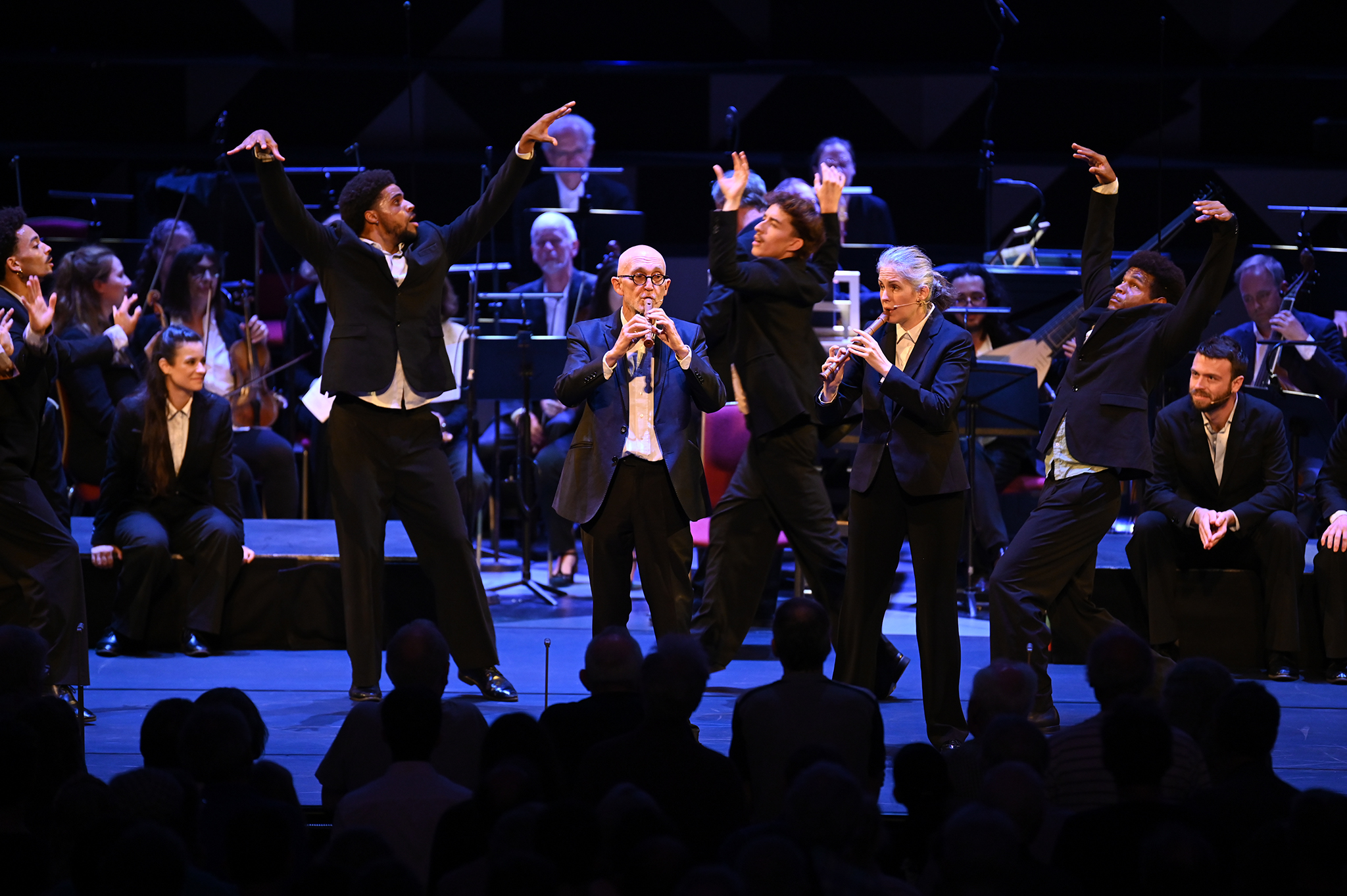 But what did this all glittering Baroque floorshow – Versailles does Vegas – mean? Certainly, the celebration of love and coupling (faithful to both Shakespearean source and Purcellian revision) felt clear enough, from Corydon and Mopsa’s burlesque courtship to the final enticement of Hymen, god of nuptials (Herman-Wilson again), out of his sloth and into the final jubilations. Otherwise, Claire Schirck’s costumes, assisted by Fabrice Sarcy’s lighting, took us out of the dark-suited gloom of the first part into the rich earth colours worn by the performers in the second. Nature comes alive with fertility and fruitfulness and a Masque of the Seasons dances us through the unfolding year. A Rite of Spring-like atmosphere prevailed, with light, warmth and growth – embodied in the dancers’ gravity-defying leaps – conquering sluggish, earthbound darkness.
But what did this all glittering Baroque floorshow – Versailles does Vegas – mean? Certainly, the celebration of love and coupling (faithful to both Shakespearean source and Purcellian revision) felt clear enough, from Corydon and Mopsa’s burlesque courtship to the final enticement of Hymen, god of nuptials (Herman-Wilson again), out of his sloth and into the final jubilations. Otherwise, Claire Schirck’s costumes, assisted by Fabrice Sarcy’s lighting, took us out of the dark-suited gloom of the first part into the rich earth colours worn by the performers in the second. Nature comes alive with fertility and fruitfulness and a Masque of the Seasons dances us through the unfolding year. A Rite of Spring-like atmosphere prevailed, with light, warmth and growth – embodied in the dancers’ gravity-defying leaps – conquering sluggish, earthbound darkness.
Yet we missed a consistent thread of story on which to hang these jewels of music and movement. OK: Purcell himself banished plot in sections such as the second part’s anthology of lovely, but disparate, ditties, as he switches from English country air to Italian bravura aria with nonchalant agility. Still, shorn of dramatic context, highlights such as Juliette Mey’s “Plaint” came out of nowhere, and went nowhere. Turn by turn, the cabaret glittered and glowed. But in the middle of this supremely skilful show lay an empty human-shaped space.

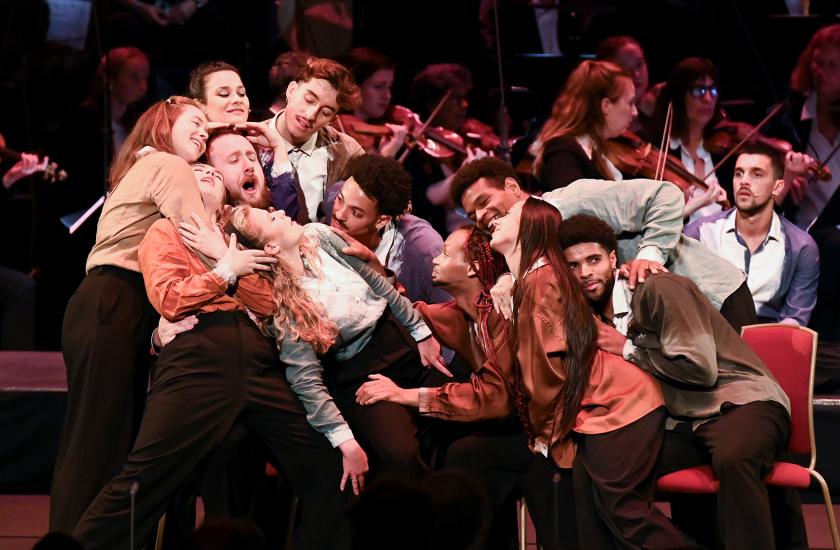

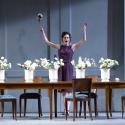
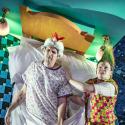
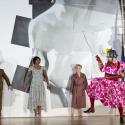
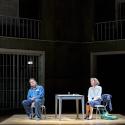








Add comment